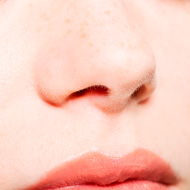Human nose offers hope for new antibiotic

"The notion that human microflora may also be a source of antimicrobial agents is a new discovery."
Bacteria in the human nose can produce a previously unknown antibiotic that is able to combat multi-resistant pathogens, according to scientists from the University of Tübingen in Germany.
The novel antibiotic is produced by Staphylococcus lugdunensis, which colonises in the human nose. Tests on mice have shown the substance, which has been named lugdunin, is effective against multi-resistant pathogens where classic antibiotics have ceased to work.
The human nasal cavity is the natural habitat for harmful Staphylococcus bacteria. But scientists found that when Staphylococcus lugdunensis is present in the nose, Staphylococcus aureus (MRSA) is rarely found.
Commenting on the novel discovery, study author Professor Andreas Peschel explained: "Normally antibiotics are formed only by soil bacteria and fungi. The notion that human microflora may also be a source of antimicrobial agents is a new discovery."
Scientists from the Institute of Organic Chemistry found lugdunin is made up of a previously unseen ring structure of protein blocks. It therefore establishes a new class of materials.
The issue of antibiotic resistance is one of increasing concern - infections caused by antibiotic resistant bacteria such as MRSA are among the leading causes of death globally.
Another of the study's authors, Dr Bernhard Krismer, said: "There are estimates that suggest that more people will die from resistant bacteria in the coming decades than cancer. The improper use of antibiotics strengthens this alarming development."
Many of the pathogens cannot be avoided as they are part of human microflora on skin and mucous membranes. For those with serious underlying illnesses and weakened immune systems, they pose a particular threat.
The research team's findings, which have been published in the journal Nature, offer new ways to find antibiotics and develop strategies for the prevention of infection. Future work will aim to find out whether lugdunin could be used in therapy. One possibility is to give patients at risk from MRSA a harmless lugdunin-forming bacteria to prevent infection.



 The BSAVA has opened submissions for the BSAVA Clinical Research Abstracts 2026.
The BSAVA has opened submissions for the BSAVA Clinical Research Abstracts 2026.